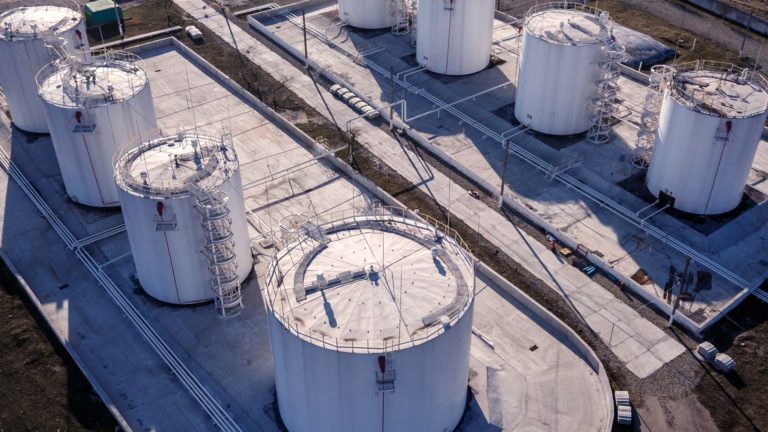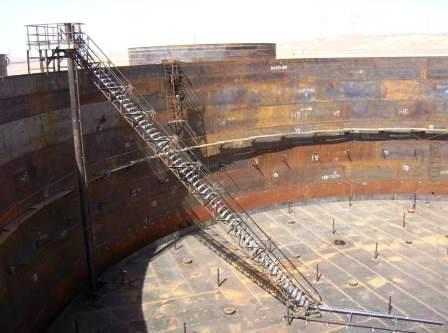Comprehensive Overview to Effective Tank Welding Evaluation Techniques and Ideal Practices for Quality Control
In the realm of container welding, extensive examination techniques are extremely important for securing architectural honesty and guaranteeing compliance with sector policies. This guide offers an organized method to numerous inspection techniques, including aesthetic evaluations and non-destructive screening, which play an important role in identifying problems prior to they escalate right into serious concerns. Additionally, the value of thorough paperwork and the application of continuous enhancement techniques can not be overemphasized. As we check out these essential elements, it ends up being clear that an aggressive examination approach is not simply beneficial, however crucial for operational success in settings taking care of harmful products.
Importance of Container Welding Evaluation

Tank welding examination functions as a preventative action, identifying possible issues such as splits, porosity, or inappropriate joint infiltration before they escalate into significant concerns. Regular examinations not only abide by market policies and criteria however additionally improve the long life of the containers, decreasing the need for costly repairs or replacements.

Aesthetic Examination Strategies
Employing systematic visual evaluation methods is vital for evaluating the quality and honesty of welded joints in tanks. This method acts as the first line of defense in recognizing possible flaws such as fractures, damages, and insufficient penetration. The inspector must come close to the task with a keen eye, using proper tools like magnifying glasses, flashlights, and mirrors to enhance presence.
Throughout the assessment procedure, the examiner should evaluate the weld profile, ensuring it abides by defined standards and guidelines (Tank Welding Inspection). This consists of taking a look at the grain size, height, and blend with the base material. Examiners ought to also pay close interest to the surrounding locations for signs of thermal distortion or contamination that may impact the weld's efficiency
Documents of searchings for is crucial; examiners ought to videotape any abnormalities, categorizing them by seriousness for additional assessment. This organized technique not just help in prompt problem identification but additionally adds to lasting quality control by guaranteeing compliance with industry standards. Routine training and calibration of aesthetic examination methods better boost the integrity of analyses, eventually leading to more secure and much more long lasting storage tank structures.
Non-Destructive Evaluating Techniques
Non-destructive screening (NDT) approaches are frequently utilized in tank welding examinations to assess the integrity of bonded joints without jeopardizing their architectural integrity. These methods are essential for recognizing defects such as cracks, voids, and incorporations that can cause tragic failings if left unseen.
Usual NDT approaches include ultrasonic testing (UT), which makes use of high-frequency sound waves to find internal flaws; radiographic screening (RT), utilizing X-rays or gamma rays to envision weld frameworks; and find more information magnetic bit screening (MT), which reveals surface area and near-surface interruptions in ferromagnetic products (Tank Welding Inspection). Liquid penetrant screening (PT) is also commonly used, capable of spotting surface-breaking issues by applying a fluorescent or color contrast color
Each NDT approach has its certain applications and benefits, making it necessary for examiners to select the proper technique based on the material and the kind of weld being assessed. The combination of these NDT methods into the evaluation procedure enhances the overall quality guarantee framework, making sure that bonded containers meet security and efficiency standards. Inevitably, NDT plays an essential duty in preserving the stability and longevity of tank frameworks in different commercial applications.

Documentation and Reporting
Making certain thorough documentation and reporting throughout tank welding evaluations is critical for maintaining compliance with sector criteria and promoting efficient communication amongst stakeholders. Correct documentation functions as a detailed record of examination tasks, findings, and any rehabilitative activities taken throughout the welding procedure. This information is vital not just for quality assurance however additionally for audits and regulative reviews.

A well-structured inspection report must consist of information such as the day of inspection, names of inspectors, welding treatments used, products utilized, and any kind of deviations from developed requirements. In addition, photos and representations can boost the clarity of the report, giving aesthetic context to the searchings for. It is likewise crucial to document any non-conformities in addition to their resolution, making sure that all stakeholders are educated of possible dangers and the actions required to alleviate them.
In addition, keeping a centralized database for all assessment reports allows for very easy access and testimonial, fostering a culture of transparency and accountability. By focusing on precise paperwork and reporting, organizations can not just support high quality guarantee however additionally enhance their track record within the industry, eventually leading to enhanced safety and security and functional efficiency.
Constant Renovation Practices
Continual renovation practices are crucial for improving the top quality and efficiency of storage tank welding evaluations. One effective method includes normal training and upskilling of assessment employees to remain abreast of the most current welding innovations and requirements.
Moreover, using data-driven evaluation allows organizations to track inspection results, determine fads, and pinpoint locations for enhancement. Utilizing devices such as origin evaluation can help in understanding the underlying issues resulting in defects, allowing targeted treatments. Additionally, soliciting feedback from evaluation groups and stakeholders develops a collaborative environment that encourages ingenious options.
Incorporating sophisticated technologies, such as computerized assessment systems and real-time monitoring, can substantially boost the precision article and rate of inspections. Regular audits of the examination processes additionally add to a society of liability and continuous refinement. Ultimately, these continual renovation techniques not just boost the top quality of storage tank welding assessments however also add to total operational excellence and consumer satisfaction.
Conclusion
In verdict, reliable container welding evaluation is pivotal for making sure the architectural integrity and safety of storage space systems, especially those dealing with harmful materials. Employing a combination of visual examination techniques and non-destructive screening methods promotes the early identification of flaws, thus preserving conformity with market requirements. Additionally, robust documents and a commitment to constant enhancement enhance quality guarantee practices. Ultimately, these steps contribute substantially to functional quality and the avoidance of possible safety and continue reading this security threats.